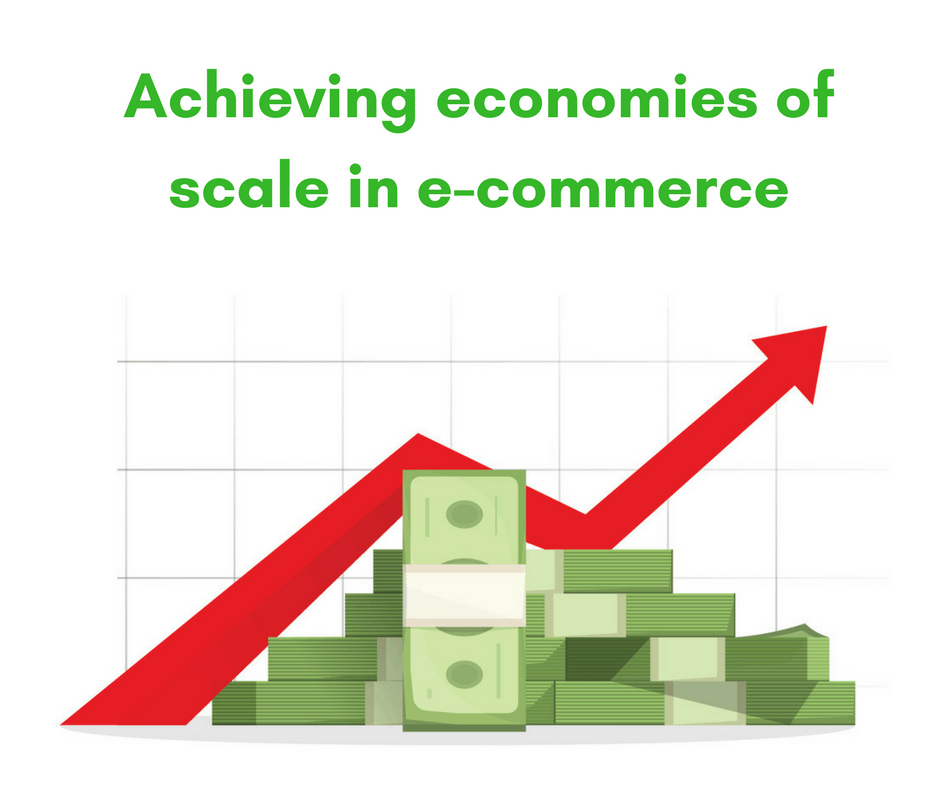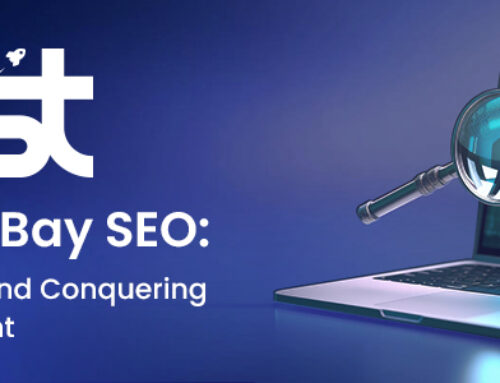
The dream of anyone setting up their own online e-commerce business is that it will grow and grow and, to paraphrase Only Fools and Horses’ Del Boy, “One day we’ll be millionaires”. But growth has some other ‘cushdy’ advantages outside of riches – economies of scale.
The idea is a simple one: the bigger you get, the lower the unit price per item you need becomes – be it raw materials, storage, packaging, shipping, premises, overheads and even technology. Suppliers like to shift large numbers of things, not individual ones and so as you grow so you can reap a small discount on unit price as you go.
And over time, this can really start to add up.
So, how can you achieve such economies of scale in your e-commerce business? Let’s see what impact it can have on various aspects of a typical business.
Shipping
If I, as an individual want to ship a box I use the mail. For the one box it is relatively inexpensive, but if you scale that up across hundreds or even thousands of boxes it becomes prohibitively expensive. This is why we have carriers that specialise in e-commerce fulfilment. Here the economies of scale are obvious: if you have 50 boxes to shift a carrier will see a van-load and, crucially, just the one trip and offer you a good price per box. Scale this up further and you get a lorry full and so on – each box becomes relatively cheap to transport.
What is interesting about shipping at volume is that once you have sufficient volume you can work with a business courier service to access a range of delivery options – next day, 2-3 working day or even every two hours. Here, if you have enough volume of each delivery category, you can achieve economies of scale across all delivery options making each affordable.
This helps the business as, increasingly, shipping options are becoming the battle ground between etailers who can no longer compete on price alone.
The key here is to talk to shipping companies and compare the best prices, asking about how the economies of scale can be attained across a range of delivery options, not just the unit cost of shipping items in one way. Many carriers will give you access to software that can help you manage how you use them, or indeed you can use independent software to manage it and reap the best economies of scale (see Technology, below)
Packaging
As with shipping, buying in packaging materials is an easy one to see economies of scale in. Buying one box to package up something is cost effective if you just have the one thing, but replicate that over the thousands of items you probably want to send and it ceases to be so. If you have the demand and can guarantee the need for multiple boxes – even of a variety of sizes, shapes and materials – then suppliers are going to do you a good price. It cost them less to produce as they too bring in economies of scale when buying the raw materials to satisfy your order.
The real advantage here is that by cutting away the unit cost of your packaging you can afford to add in specialised printing, better packaging materials and even unique bespoke packaging (each with its own economies of scale efficiency) to differentiate your business. Bespoke and delightful packaging can make you stand out from the crowd, offering a nice unboxing experience for the customer. This can tip sales in your favour.
If what you sell is not really dependent on a nice unboxing experience, then the economies of scale on packaging are simply something that shows up, magnificently, on your bottom line.
Again talk to your suppliers about how to get the best deal on scale and how that deal can be grown as you expand.
Technology
Technology, too, can be subject to economies of scale, but in a different way. Buying in order management software to help run your business is usually priced in terms of users or volumes – much like software you may buy for your PC. If it’s just you using it, then it has a unit cost much higher than if three people use it. The idea is the same as with shipping or packaging.
However, these days, many business technologies are delivered to businesses in what is known as Software as a Service (SaaS) model. This is where the company using the software, be it order management software, CRM software, or even Microsoft Office software, pays a monthly fee and gains online access to that software. The model is usually priced so that the more you use it, or the more sites you have that use it, or indeed the more volume of use you get from it, the more you are charged.
This seems to go against the theme of economies of scale, but in practice it doesn’t: the cost goes up but the unit cost of using it per transaction, per user or per unit volume, or whatever it is, comes down.
The interesting part is that within the fee that you pay, you get software that has minimum downtime, is regularly updated and its maintenance and reliability are the responsibility of the software vendor not you the user.
This is why SaaS is becoming the standard way that businesses use technology. It offers the usual economies of scale, but it also allows for business expansion, fixed monthly costs and takes away much of the cost and issues with managing one’s own IT. So, in effect, it delivers economies of scale not just in terms of ‘buying’ the tech, but also in managing it and keeping your business running.
Product sourcing
Bringing Del Boy back into the equation for a moment, he could sell cheap, hooky watches out of his battered old suitcase down Peckham Market, because he ‘bought’ a job lot of them. The same applies to your e-commerce business. If you are, say a T-shirt printer, then the more blank Ts you can buy in one go, the cheaper the unit price will be. This is because the economies of scale go all the way back along the value chain to the initial supplier of the raw materials.
Reaping economies of scale for product sourcing is perhaps the area where you can save the most money – but also takes perhaps the most amount of donkey work. For starters you need to find the suppliers that have what you are looking for – and then negotiate. They too are going to want to benefit from economies of scale, so the bigger orders you can make the better price you will get.
However, you don’t want to get caught out with vast amounts of inventory that you can’t shift, or which you have to heavily discount to move on. So, what is the answer? Here you need to turn to technology. You could just hit Google, but there are tools out there that you can use to help you understand what the market is for what you have to sell – giving you an idea of volume. There are also tools that can help you evaluate which products are the best for the price. Then there are tools that can help you evaluate products more specifically. There are also tools to help you search for inventory coming from liquidation and wholesale outposts.
Business premesis
Property, certainly in the UK, is one of the biggest costs faced by business. Economies of scale with property don’t necessarily apply per se in the same way as they do in other aspects of business. The bigger you become, the more real-estate you need, the more it costs. True, there costs per square foot of warehousing can decline with volume but it comes with other costs.
One answer which does offer an economy of scale factor is to use a third party eCommerce fulfilment provider. Having someone else handle your warehousing can yield huge economies of scale as your business grows. The more space you use the less per unit area you pay.
But what makes using a third party company so interesting is that often they don’t just rent you storage space: they will also help with everything else in that you need. Companies such as Mail Workshop provide the shelf space, but will also provide the inventory management, ecommerce picking, packing, printing and even distribution.
The economies of scale here are multiple – and multiply across all these factors. The more you scale up, the bigger the savings you can potentially make in not just business premises costs, but also management, technology, packaging, labelling and distribution.
Together these elements of an ecommerce business can all be scaled up – and you will want to scale them up as you grow. But growth can be costly, so always look for the cost saving economies of scale that you can make at every stage of your business process and your business’s evolution. Make it part of your business plan and your whole philosophy, and before you know it Peckham will be a distant memory.
Parcelhub is a multi-carrier shipping and customer services solution. Flexible and scalable, it integrates seamlessly with order management systems, providing hundreds of eCommerce and wholesale businesses with one access point to many of the largest UK and international parcel carriers.
Multi-channel eCommerce platforms are easily integrated and dedicated pro-active parcel management comes as standard.
Distributing more than 4.5 million parcels on its own carrier contracts every year, Parcelhub’s free
multi-carrier shipping software grants hundreds of national and global businesses access to ‘pooled volume’ discounted rates from its carefully selected range of carrier partners, including; Yodel, Hermes, DPD, UK Mail, DHL, Whistl, UPS, DX, Parcelforce, CollectPlus, SkyNet, Panther Logistics, Direct Link and Palletforce.






